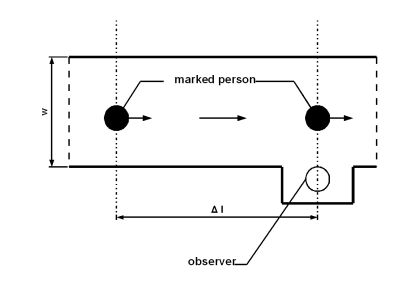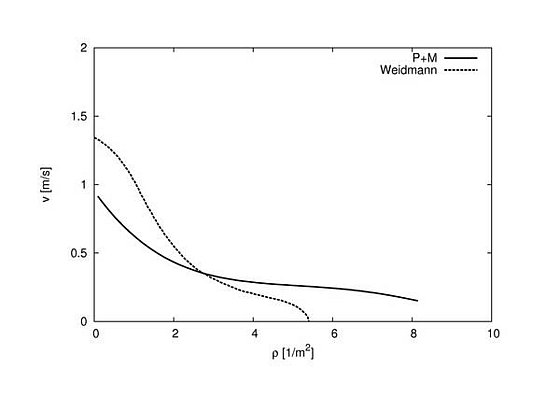Setup

Flow direction: Unknown
Boundary conditions: Open
Places of research: Russia/USSR
Underlying data: Field inquiries and experimental research
Data collection: Two different methods
1st method: Observation on location
- To simultaneously gather data of the concentration and velocity a section of a footpath was determined (see graphic below).
- An observer stood at the end of the section.
- After the observer had marked a person in the crowd, he registered his arrival at the beginning of the section.
- At this moment he began the time measurement and started to count the people passing him.
- When the marked person arrived at his position the observer stopped the time measurement and the count.
- As a result one got the number of people in a measured area, hence the medial concentration, and the time of movement through a measured area, hence the medial velocity.
2nd method: Observation of photographs
- A characteristic section of a footpath was photographed from an elavated position and the measurements of the section were recorded.
- The photographs were taken in regular intervals (3...5 s).
- On the series of photographs a marked person was observed.
- By counting the people in the measured area the medial concentration was obtained for each photograph and for the course of time of a marked person passing the section.
- By observing the location of a marked person and the time he needed for passing the section the medial velocity was obtained.
Fundamental Diagram
Data
The data can be found in a zip-file.
References
V. M. Predtechenskii and A. I. Milinskii
Planing for Foot Traffic Flow in Buildings
Amerind Publishing, New Dehli, 1978

